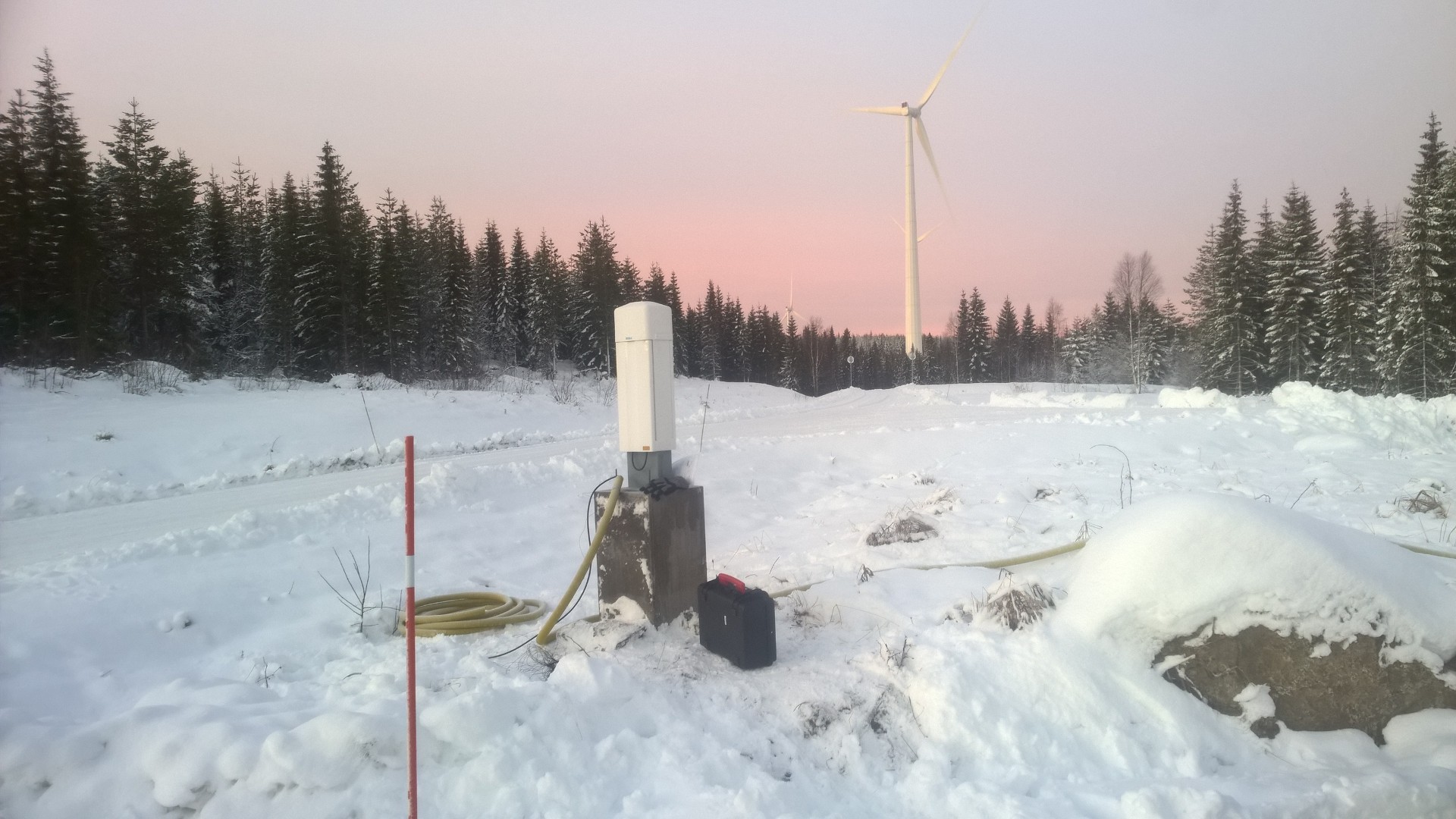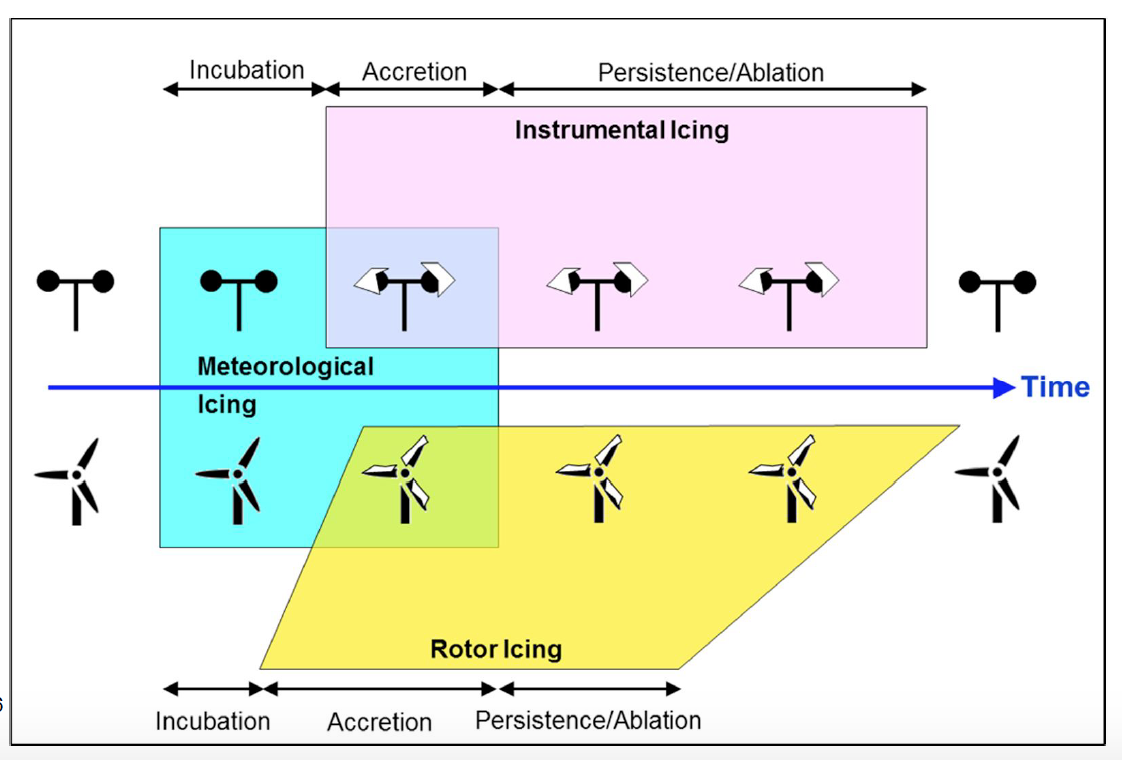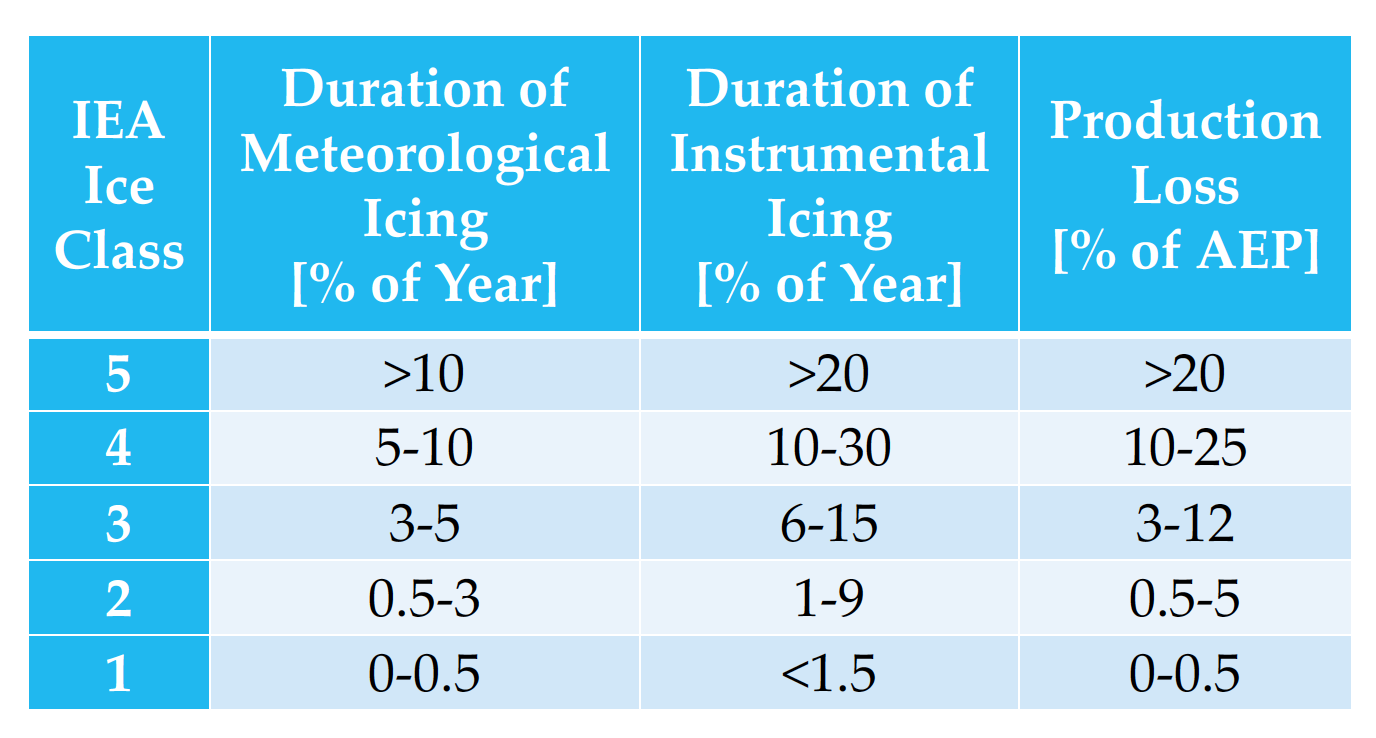Managing Blade Icing - New research and tools for anticipating icing events
 As global wind capacity increases, companies are often finding the most favorable project locations - the so-called "low hanging fruit" - have already been developed. For this reason, many developers have turned to more challenging sites in emerging markets, as well as regions with colder climates like Scandinavia, Canada, and the northern United States. These locations offer the dual advantages of low population density (with potentially fewer instances of community opposition to projects), - and some of the world's highest quality wind resources.
As global wind capacity increases, companies are often finding the most favorable project locations - the so-called "low hanging fruit" - have already been developed. For this reason, many developers have turned to more challenging sites in emerging markets, as well as regions with colder climates like Scandinavia, Canada, and the northern United States. These locations offer the dual advantages of low population density (with potentially fewer instances of community opposition to projects), - and some of the world's highest quality wind resources.
Wind power in cold and icing climates is a fast-growing area of the industry. According to a "Wind Energy in Cold Climates" study by international expert group, International Energy Agency, (IEA) Wind Task 19, the cold weather market reached 127GW at the end of 2015, and is projected to grow at a rate of 12GW annually through 2020. This represents a market segment three times that of offshore wind power. It not only presents major opportunities, but considerable demand for further research, due to the special challenges these environments pose.
Challenges of Cold Climates
Cold, icy weather causes a range of known issues for the wind industry's standard equipment. For measurement and condition monitoring, non-heated anemometers and wind vanes stop measuring when they freeze up, creating large data gaps, increased measurement campaign costs, and increased uncertainty in production estimates. Typical rime ice has been known to bring down entire met towers, and tilt-up towers can collapse under the weight of heavily iced guy-wires. Remote sensing technology, which sends out a sound or light signal and reads the backscatter to capture conditions, has increasingly been used as a replacement or supplement to fill in data, and helps overcome these challenges in cold climates for pre-construction site assessment.
One of the biggest obstacles faced by cold climate projects is blade icing. Ice throw is a clear safety hazard and its mitigation has always been taken very seriously. What is less understood, however, is the impact of blade icing on production losses, and how to anticipate these losses prior to project construction. While estimating blade icing certainly adds to the complexity of an already complex development cycle, further research is vital, because these events cause operators to lose millions of dollars each year. Here again, remote sensing technology may provide a tool to overcome this challenge.
Defining Icing
Icing is divided into two categories: meteorological and instrumental. Both are measures of time. Meteorological icing refers to the time during which conditions are favorable to forming ice; there is liquid water, and the temperature is below 0 °C. Instrumental icing refers to the time ice stays on the instruments (by definition an unheated cup anemometer) once it has started to form.
 Figure 1 illustrates a typical icing event, from the start of meteorological icing to the end of instrumental icing. Note the fact that the icing time of instruments is slightly different from the icing time of a wind turbine rotor. Generally, icing can be caused by freezing rain, which is quite rare, or by cloud conditions, which is relatively common.
Figure 1 illustrates a typical icing event, from the start of meteorological icing to the end of instrumental icing. Note the fact that the icing time of instruments is slightly different from the icing time of a wind turbine rotor. Generally, icing can be caused by freezing rain, which is quite rare, or by cloud conditions, which is relatively common.
IEA Wind Task 19, which provides guidance on wind energy in cold climates, has instituted an ice classification system shown in Table 1. These IEA ice classes can be used to compare measures of instrumental and meteorological icing, and help place project sites into appropriate classes for icing severity and expected production losses. 
Icing is difficult to measure directly. For wind turbine applications, a perfect icing measurement would cover the entire rotor area, not just a point measurement near the nacelle. As turbines get larger and larger, the distance between the top of the nacelle and the highest blade tip height increases. Cloud conditions can, and do, change in this distance. Given the duration of cloud-based icing, this is significant, since it is entirely possible for the blade tip to be covered in clouds while the nacelle is not. In this case, measuring at the nacelle height gives misleading results.
As turbine heights continue to increase, blade height measurements from a met mast are becoming prohibitively expensive. This is why a mobile, ground-based remote sensing solution, requiring no tower construction, is particularly attractive.
Research on remote ice sensing
Recently, the Technical Research Centre of Finland (VTT), partnered with Vaisala, Suomen Hyötytuuli, Kjeller Vindteknikk and Fraunhofer IWES, to conduct a new research project on icing. This project evaluated icing data at four sites: two in Finland, one in Norway, and one in Germany. Data was collected over periods of four to six months, from different types of measurement equipment (including remote sensing) to test whether the equipment could appropriately categorize the site's ice class according to IEA standards.
With the remote sensing equipment, the goal was to test how well the devices could identify in-cloud icing conditions using optical signals to monitor the cloud base height, and use that measurement with outside temperature measurements as a proxy for icing conditions.
The study found that the remote sensing devices with by far the highest availability, were the ceilometers installed at both sites in Finland. The ceilometer is not frequently used in the wind industry because it doesn't measure wind conditions. It does, however, provide very accurate readings of cloud height as well as cloud profiles, to better understand the composition of clouds passing over the site. Along with these capabilities, the key advantage of the ceilometer versus other remote sensing technologies, like wind LiDAR, is that it offers 100% data availability when powered; LiDAR had only 55-80% availability in the study.
Key takeaways
As the cold weather wind market grows, further icing research is critical in learning how to ameliorate or avoid some of the special challenges these environments present. Mitigating the effects of blade icing is particularly pressing when considering production losses and risk to personnel. The industry must continue to explore alternative technologies and methods to better improve safety, and mitigate the financial impacts of icing. Although the ceilometer is relatively new to the wind industry, it is a workhorse of the aviation sector, with over 5,000 airport deployments and proven performance 24/7. With this new research and some early commercial deployments, the ceilometer appears to be a promising new solution for understanding blade icing and improving its detection.
Juha Pladanius is offering manager, and Francesca Davidson is energy communications expert at Vaisala, a global industrial and environmental measurement company with a business unit dedicated to serving the weather measurement, energy assessment, and power forecasting needs of the renewable energy.
Vaisala | www.vaisala.com
Author: Juha Paldanius and Francesca Davidson
Volume: 2017 January/February








